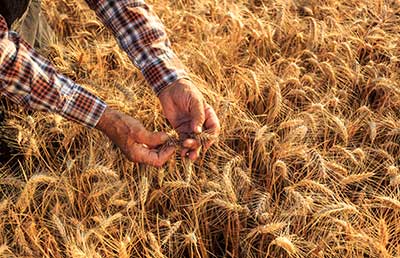Built-In Gains Tax Less Costly – But Still There

Many farmers have operated as a C Corporation for many years and one of the main reasons they have not switched to an S corporation is the fear of the built-in gains (BIG) tax. During the first five years after switching to an S corporation, there will be applied a built-in gains tax of 21% (the new top corporate tax rate) on any gain that was on the books as of the date of switching.
For most farm operations, this gain would be due on the sale of any equipment and the value of the receivables and crop inventories (including growing crop) and prepaids. This can be a very large number. However, the gain that is taxed is limited to the amount of tax that would be due if it had filed as a C Corporation. For most farm operations, over a five-year period, it would be fairly easy to keep S corporation income to zero (especially with today’s crop prices). Let’s look at an example:
ABC Farm Corporation switches to an S corporation effective January 1, 2018. It has on its books $1 million of farm equipment and $1 million of receivables, inventories and prepaids. There is no tax cost basis on these assets and all of the gain from the receivables, etc. of $1 million is recognized in 2018. If ABC Farm Corporation’s taxable income is greater than $1 million, it will owe $210,000 of BIG tax on these asset gains. However, if the income is zero or less, than no BIG tax is owed. Between zero and $1 million of taxable income, the corporation will owe BIG tax based on that taxable income amount. The shareholders will get a reduction in the income passed through to them for the BIG tax paid. Assume income is exactly $1 million, then the shareholders will be taxed on $790,000 of net S corporation income.
Before 2018, the BIG corporate rate was 35%. It is now 21%. This has reduced the effect of the BIG tax, however, it has not eliminated it.
I have prepared a table that shows the net cost of the BIG with the new 21% corporate rate. The table shows the effect of the BIG tax on both ordinary income items and capital gains from the sale of land, etc. as follows:
Note that as the individual tax rate increases, the net cost of the BIG tax decreases.
I also worked up a chart showing what the BIG tax would be if the old corporate rate of 35% was maintained, but using current individual tax rates. This table shows the net savings from lowering the corporate rate from 35% to 21%. As you can see, the cost of the BIG tax has dropped quite a bit, but it still costs anywhere from 13.2% to 18.9% on ordinary income and 16.8% to 21% on capital gain items.
Here is that table:
Conclusion – For most farm operations, the BIG tax can be easily avoided by keeping taxable income to zero for five years. After that date, no BIG tax is owed. For those farmers who can’t keep taxable income to zero, the tables above show the effect based on your current tax bracket. Due to the new tax law, it is extremely prudent to discuss your entity structure with your tax advisor. However, be aware that major changes may happen on the Section 199A deduction, therefore, understand that it may be difficult for us to give you that correct prudent advice quite yet.
Paul Neiffer is a certified public accountant and business advisor specializing in income taxation, accounting services, and succession planning for farmers and agribusiness processors. Paul is a principal with CliftonLarsonAllen in Walla Walla, Washington, as well as a regular speaker at national conferences and contributor at agweb.com. Raised on a farm in central Washington, he has been immersed in the ag industry his entire life, including the last 30 years professionally. Paul and his wife purchase an 180 acre ranch in 2016 and enjoy keeping it full of animals.



Comments are closed.